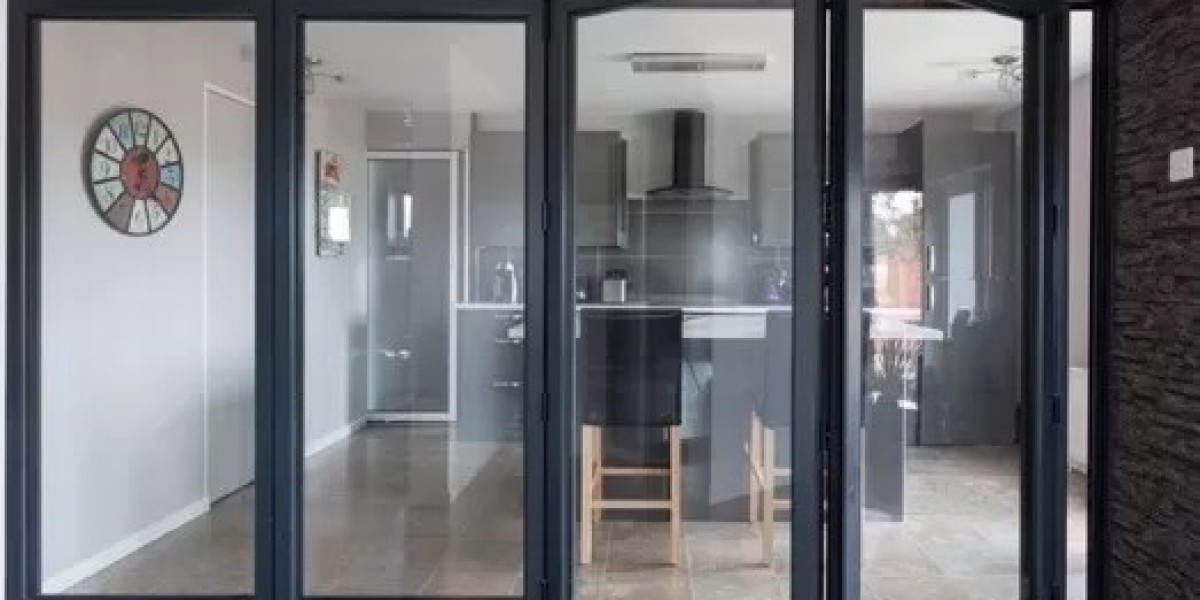Restoring Smooth Operation: A Comprehensive Guide to Repairing Your Bifold Door Top Pivot
Bifold doors, likewise called folding doors, are a popular choice for making the most of space and creating a smooth transition in between spaces or between indoor and outside living areas. Their unique folding mechanism allows for wider openings than traditional hinged doors, making them perfect for closets, pantries, laundry rooms, and even as patio doors. Nevertheless, the smooth and effective operation of a bifold door depends upon a number of key parts, and one of the most vital, yet often overlooked, is the leading pivot.
The top pivot is a small but crucial system that sits at the leading corner of a bifold door panel, permitting it to turn efficiently within the track system. With time, due to wear and tear, improper positioning, or perhaps unintentional damage, this pivot can fail. A malfunctioning top pivot can lead to a host of discouraging concerns, from sticking doors and noisy operation to finish immobility. Fortunately, repairing or changing a bifold door leading pivot is frequently a workable DIY job, conserving you the cost of professional repairs and bring back the performance of your door.
This comprehensive guide will walk you through the process of understanding, diagnosing, and fixing a bifold door top pivot. We will check out the elements included, recognize typical problems, equip you with the needed tools and products, and provide a detailed repair process. Whether you are a skilled DIY lover or a homeowner taking on home repairs for the very first time, this article will empower you to confidently deal with a defective bifold door top pivot and get your door running smoothly once again.
Comprehending the Top Pivot System
Before diving into the repair process, it's useful to comprehend the function of the top pivot within the broader bifold door system. The leading pivot, in conjunction with the bottom pivot (often referred to as a guide or wheel), works to control the movement and stability of each door panel.
Normally, a bifold door system consists of:
- Top Track: A metal track installed horizontally at the top of the door opening. This track houses the leading pivots and guides the door panel's movement.
- Bottom Track or Guide: Some bifold door systems make use of a bottom track, while others employ a bottom guide that is either a pin or a wheel, interacting with a groove or channel on the flooring or door jamb. This bottom component assists stabilize the door panel and preserves alignment.
- Top Pivots: These are small, generally plastic or metal elements that are placed into the top edge of the door panel and trip within the leading track. They enable the door panel to pivot and slide efficiently along the track.
- Connecting Hinges: Hinges that connect the specific door panels together, allowing them to fold in a concertina design.
- Door Handles and Hardware: Hardware utilized for operating and protecting the bifold door.
The leading pivot bears a considerable load, assisting in the smooth moving and folding action of the door. It requires to be robust adequate to stand up to continuous usage, yet exact adequate to enable for effortless movement. Understanding its function assists in appreciating why its proper function is so vital to the overall operation of the bifold door.
Identifying Common Top Pivot Problems
Acknowledging the signs of a stopping working top pivot is the initial step towards an effective repair. Here are some typical signs that suggest a problem with your fix bifold door hardware door's leading pivot:
- Sticking or Jerky Door Movement: The door ends up being hard to open or close smoothly, thinking twice or catching as it moves along the track. This is frequently the most visible sign.
- Noisy Operation: You may hear grinding, squeaking, or clicking noises as the door is run, showing friction or damage within the pivot mechanism or track.
- Door Panel Drooping or Sagging: If the top pivot is used or broken, the door panel might droop a little at the top, causing misalignment and more preventing smooth operation.
- Visible Damage to the Pivot: Upon evaluation, you might be able to see fractures, chips, or breaks in the plastic or metal parts of the leading pivot itself.
- Door Jumping Out of the Track: In serious cases of pivot failure, the door panel may jump out of the leading track entirely, becoming completely unusable and potentially harming the door or frame.
- Increased Effort to Operate: If you discover yourself having to apply more force than usual to open or close the door, it could be a sign of increased friction due to a failing pivot.
If you observe any of these symptoms, it is highly most likely that your bifold door's leading pivot requires attention. Overlooking these concerns can result in more damage to the door, track, or surrounding frame, making the repair more complicated and costly in the long run.
Tools and Materials You'll Need
Before you start the repair, collect the essential tools and materials to guarantee a smooth and efficient process. Having whatever prepared beforehand will save you time and disappointment.
Tools:
- Screwdriver Set: A Phillips head and flathead screwdriver will be necessary for getting rid of and installing screws connected with the pivot and door hardware. Guarantee you have numerous sizes to fit different screws.
- Pliers: Pliers can be valuable for grasping and steering little parts, particularly if the old pivot is stuck or challenging to eliminate.
- Hammer (Optional): A lightweight hammer might be required to gently tap the new pivot into location, if needed by the design.
- Determining Tape: To guarantee precise positioning and positioning when installing the brand-new pivot.
- Pencil or Marker: For marking positions and guaranteeing correct positioning.
- Shatterproof glass: Protecting your eyes is vital when working with tools and hardware.
- Gloves (Optional): To protect your hands and supply better grip.
Materials:
- Replacement Top Pivot: This is the most vital material. It's necessary to acquire a replacement pivot that is compatible with your particular bifold door system. Take the old pivot with you to the hardware shop for comparison, or take down the door producer and design if possible. Top pivots been available in numerous sizes and designs.
- Lube (Silicone Spray or Dry Graphite): Lubricating the track and new pivot will make sure smooth, peaceful operation and extend the life of the pivot.
- Wood Filler or Wood Glue (Optional): If the screw holes holding the pivot in location are stripped or damaged, wood filler or glue may be needed to enhance them.
- New Screws (Optional): If the existing screws are harmed or removed, have a set of replacement screws of the appropriate size and type on hand.
Step-by-Step Guide to Repairing the Top Pivot
With your tools and products ready, you can now continue with the repair. Follow these detailed instructions thoroughly:
Step 1: Safety and Preparation
- Put on your security glasses.
- Ensure the workspace is clear and well-lit.
- Gather all your tools and products and place them within easy reach.
Action 2: Inspect and Access the Top Pivot
- Thoroughly analyze the leading pivot of the problematic door panel to aesthetically examine the damage. Look for fractures, breaks, or signs of wear.
- Identify how the pivot is connected to the door. The majority of are usually held in location by screws.
- You may need to slightly open or close the bifold door to gain much better access to the top pivot.
Step 3: Remove the Old Top Pivot
- Using the proper screwdriver (normally Phillips head), thoroughly remove the screws protecting the top pivot to the door panel.
- If the screws are stripped or challenging to remove, you may require to utilize pliers to grip the screw head and gently turn it. Avoid damaging the surrounding door product.
- Once the screws are eliminated, gently take out the old top pivot. If it's stuck, use pliers to gently wiggle and pull it totally free.
Step 4: Prepare for the New Pivot (If Necessary)
- Inspect Screw Holes: Examine the screw holes in the door where the pivot was connected. If they are stripped or enlarged, you may need to reinforce them.
- For Minor Stripping: Apply a percentage of wood glue into the screw hole and let it partially dry for a few minutes. This will provide the screws a much better grip.
- For Severely Stripped Holes: Use wood filler to fill the stripped holes totally. Permit the filler to dry and harden according to the product directions. Once dry, pre-drill pilot holes somewhat smaller than the new screws to ensure a secure attachment.
Step 5: Install the New Top Pivot
- Position the new top pivot in the exact same orientation as the old one was gotten rid of.
- Line up the screw holes of the new pivot with the holes in the door panel.
- Place the screws and tighten them safely with the screwdriver. Prevent overtightening, which might remove the screw holes or harm the pivot. Guarantee the pivot is strongly attached however not exceedingly tight.
Action 6: Lubricate the Track and Pivot
- Use a small quantity of silicone spray or dry graphite lubricant to the top track of the bifold door, concentrating on the area where the top pivot will run.
- Likewise, lightly lube the moving parts of the new leading pivot itself. This will promote smooth operation and reduce friction.
Action 7: Test and Adjust
- Carefully operate the bifold door, opening and closing it a number of times.
- Look for smooth, peaceful movement. If the door still sticks or binds, re-inspect the pivot for correct installation and alignment.
- Ensure the door panels fold and unfold correctly and that the door is not rubbing versus the frame or track.
- If essential, small adjustments to the pivot position or track positioning might be required. Consult your bifold door manufacturer's directions for particular adjustment treatments if supplied.
Step 8: Clean Up
- Once you are pleased with the door's operation, tidy up your work location and put away your tools.
Troubleshooting Common Issues
While repairing a top pivot is frequently uncomplicated, you may come across some difficulties. Here are a few troubleshooting suggestions:
- Pivot Doesn't Fit: If the brand-new pivot does not suit the track or door, double-check that you have the appropriate replacement type. Compare it closely to the old pivot and the door specifications.
- Screws Won't Tighten: Stripped screw holes are a typical issue. Refer back to Step 4 and utilize wood filler or glue to reinforce the holes before attempting to tighten the screws again.
- Door Still Sticks After Pivot Replacement: If the door still doesn't operate efficiently after changing the pivot, the issue may lie elsewhere. Inspect the bottom pivot/guide, the track for debris or damage, or the door panel hinges for tightness.
- Door Panel Misalignment: If the door panels are not aligned correctly after repair, ensure the leading pivot is appropriately seated in the track and that the door panel is properly positioned within the frame. Look for any warping or damage to the door panel itself.
Preserving Your Bifold Door Pivots
Preventative maintenance can considerably extend the life expectancy of your bifold door pivots and decrease the requirement for frequent repairs. Here are some handy maintenance ideas:
- Regular Lubrication: Lubricate the leading track and pivots with silicone spray or dry graphite every couple of months to minimize friction and wear.
- Keep Tracks Clean: Periodically clean the top and bottom tracks to eliminate dust, dirt, and debris that can hamper smooth operation. Use a vacuum or a brush to clean the tracks.
- Examine Regularly: Inspect the top and bottom pivots frequently for indications of wear, damage, or looseness. Attend to any minor issues without delay before they intensify.
- Avoid Slamming: Avoid knocking the bifold doors, as this can put unneeded stress on the pivots and hardware, resulting in early failure.
- Check Alignment: Periodically check the positioning of the door panels to guarantee they are folding and unfolding correctly which there is no excessive stress on the pivots.
When to Call a Professional
While DIY repair is often possible, there are situations where seeking professional help is a good idea. Consider calling a door repair expert if:
- You are uncomfortable with DIY repairs.
- The damage to the door or frame is extensive beyond simply the pivot.
- You are not able to recognize the proper replacement pivot.
- You encounter relentless problems after attempting the repair.
- The bifold door belongs to an intricate system, such as a multi-panel patio door, and needs specialized knowledge.
An expert door professional has the experience and knowledge to precisely detect intricate bifold door problems and perform repairs efficiently and successfully.
Fixing a bifold door leading pivot is a fulfilling DIY task that can bring back the smooth and effortless operation of your door. By comprehending the elements, identifying the problem, and following the step-by-step guide described in this short article, you can with confidence tackle this repair and save yourself time and money. Regular upkeep and timely attention to small concerns will ensure the longevity and reliable performance of your bifold doors for several years to come, adding to the convenience and performance of your living space.
Regularly Asked Questions (FAQs) about Bifold Door Top Pivot Repair
Q1: How do I understand what kind of leading pivot to buy as a replacement?
A: The finest way is to eliminate the old pivot and take it with you to a hardware shop. Compare it visually to the offered alternatives, focusing on the size, shape, and attachment technique. Alternatively, if you understand the producer and design of your bifold door, you might be able to discover specific replacement parts online or through the maker.
Q2: Can I repair a broken leading pivot, or do I constantly need to replace it?
A: In the majority of cases, it's more useful and trustworthy to replace a broken or used leading pivot instead of attempting to repair it. Pivots are fairly affordable, and replacement guarantees appropriate function and longevity. Attempting to repair a broken pivot may result in more problems and is typically not suggested.
Q3: My screws are stripped and will not hold the brand-new pivot. What can I do?
A: Stripped screw holes are common. Attempt using somewhat longer or thicker screws. If that doesn't work, use wood glue into the screw hole and let it partly dry before re-screwing. For significantly stripped holes, use wood filler to fill them totally, let it dry, and after that pre-drill pilot holes for the brand-new screws.
Q4: Do I need to remove the entire bifold door to replace the leading pivot?
A: Often, you can replace the top pivot without totally eliminating the door panel. Nevertheless, depending on the design and accessibility, it may be easier to partly separate the door panel to gain better access. Sometimes, particularly with heavier doors or intricate systems, eliminating the door panel may be safer and more convenient.
Q5: After replacing the top pivot, my door is still challenging to open. What else could be incorrect?
A: If the problem persists after pivot replacement, check other prospective concerns:

- Bottom pivot/guide: Inspect for damage or particles.
- Track: Clean and oil the top and bottom tracks. Look for damage or obstructions.
- Hinges: Ensure the door panel hinges are not stiff or binding. Lubricate them if necessary.
- Door Alignment: Check if the door panels are correctly lined up within the frame.
Q6: How often should I lube my bifold door pivots?
A: Regular lubrication every 3-6 months is advised for ideal efficiency. More frequent lubrication might be required in dirty or high-use environments. Use silicone spray or dry graphite lubricant to keep the pivots and track moving smoothly.







